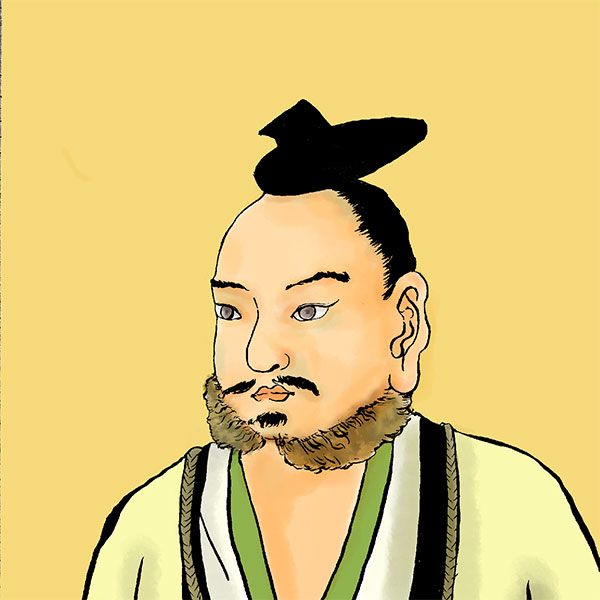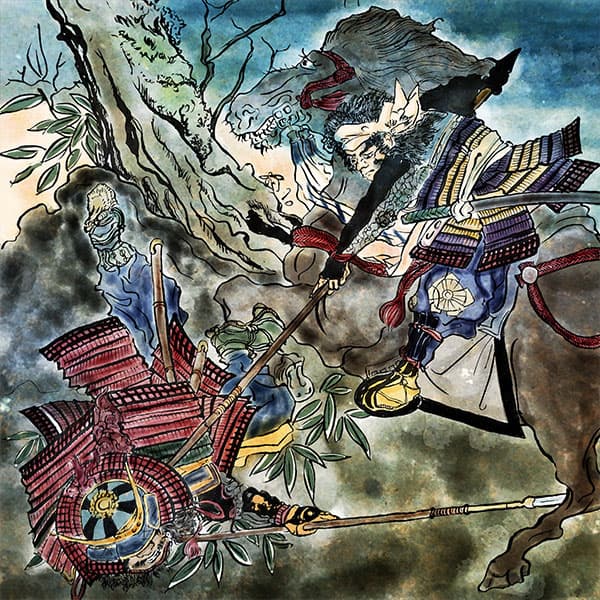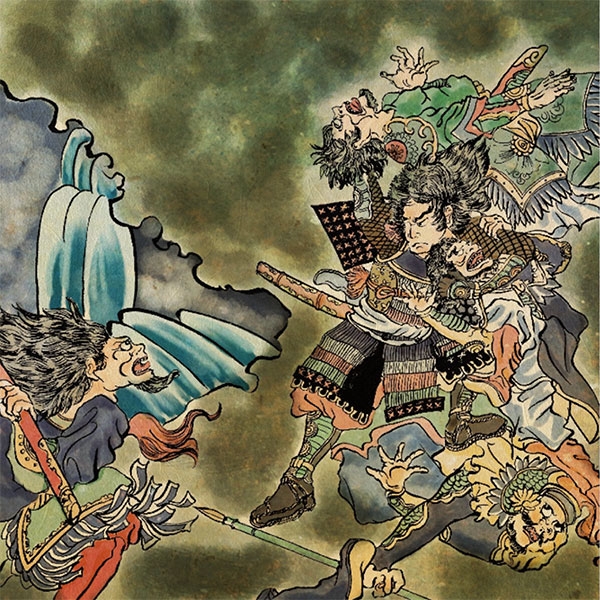Yuhei Ito (1/2)The founder of the Ito clan

Yuhei Ito
- Article category
- biography
- name
- Ito Yuhei (1559-1600)
- place of birth
- Miyazaki prefecture
- Related castles, temples and shrines

Obi Castle
- related incident
During the Sengoku period, it was said in the Tokai region and on the plane that ``Moving to Kyoto and subduing the Kinai area was one indicator of the unification of Japan.'' Around the same time, a fierce battle was taking place in Kyushu. Yuhei Ito, known as the founder of the Chukyo dynasty, fought against the Otomo and Shimazu clans and revived the Ito clan, which had once fallen into decline. We will introduce the life of Yuhei Ito, who ran through the Sengoku period, the empire of Toyotomi Hideyoshi, and the Battle of Sekigahara.
Who is Ito Hyuga?
The Ito clan was a powerful clan whose main territory was Itosho, Tagata District, Izu Province (currently Ito City, Shizuoka Prefecture) from the end of the Heian period to the Kamakura period. It is a branch of the Kudo clan that descends from the Fujiwara Minami family and Fujiwara Tamenori, and the descendants of the family, Kudo Suketsune, moved to Hyuga Province and became the Sengoku feudal lords of the Hyuga Ito clan and the lord of the Obi domain in Hyuga Province. . Descendants of Yuchika Ito moved to Iwakura, Owari Province, and later became the lords of the Owari Ito clan and the Okada Domain in Bitchu Province.
The relationship between the Ito clan and Hyuga Province stems from the fact that Yutoki Ito, the son of Suketsune Kudo, known for ``Avenging the Soga Brothers'', was given the position of landowner in Hyuga by the Kamakura Shogunate and was forced to subordinate the common house. It's the beginning.
Eventually, the Tajima Ito clan, the Kadokawa Ito clan, and the Kowaki Ito clan established themselves, and while deepening their relationships with the local powerful clans such as the Tsuchimochi clan, they established the power of Togoku samurai in Hyuga.
The main family of the Ito clan actually came to rule Hyuga in 1335, when Ito Sukemochi moved to Hyuga on orders from Takauji Ashikaga.
It is said that Yumochi was given 300 towns in Hyuga Too District to protect Musain, which was the territory of Takauji Ashikaga's wife, Toko Akahashi.
Yumochi belonged to Naoaki Hatakeyama, who was sent down as the general of the country, and fought against the Southern Court forces in Hyuga Province. Every time the situation changed, such as the expansion of Seiseifu and the Kanno Disturbance, the country was in turmoil, but the Ito clan basically maintained the position of the Northern Court and remained loyal to the shogunate. His son Sukeshige also received a nickname from the shogun Takauji and changed his name to Ujisuke Ito.
From the Muromachi period to the Sengoku period, the Ito clan gradually expanded its territory while repeatedly feuding with the shugo Shimazu clan. In 1577, Yoshisuke, unable to withstand the invasion of the Shimazu clan, was chased out of Hyuga, wandered around the Seto Inland Sea, and died in Sakai. Ito's downfall is temporary.
Yoshisuke's vassal, Munemasa Yamada, joined the Otomo clan as a guest commander and accomplished many military feats, including defeating the Shimazu army many times at Tsugamure Castle, etc., and Yoshisuke's third son, Ito Yuhei, fled to Chuo and became a vassal of Hashiba Hideyoshi. In 1587, he was recognized for his accomplishments in playing a leading role in the pacification of Kyushu, and was able to return to Hyuga as a daimyo.
The first half of Yuhei Ito's life and the downfall of the Ito clan
He was born in the second year of Eiroku (1559) in Miyakogun Castle, Hyuga Province, as the second son of Yoshisuke Ito. (The third son, including the eldest son who died young.) His childhood name was Torakumaru. The following year, in 1560, his older brother Yoshimasu took over the headship of the family and became the lord of Too-gun Castle, and his father retired and became his guardian.
In the 11th year of Eiroku (1568), Obi Castle was captured from the Shimazu clan in the fifth attack by the four generations of the Ito clan, and the still young Torakumaru (Sukehei) became the lord of Obi Castle. However, the following year, his older brother died of illness. Sukehei took over as the head of the family, and Yoshisuke once again assumed the role of head of the family, but with this, the power of the Ito clan began to decline.
In 1577, when Yoshisuke was forced out of Sadowara due to the invasion of the Shimazu clan in response to the rebellion of his vassals including Yutomo Fukunaga and Norishige Mera, Yoshisuke and other members of his family accompanied him. He relied on the Sengoku daimyo Sorin Otomo, and fled from the Mera Yamanaka to Takachiho before retreating to Bungo Province.
In 1578, Sorin invaded Hyuga Province with a large army for the sake of Yoshisuke and his grandson Yoshikata, and for his own ambition to turn Hyuga Province into a Christian nation. However, the combined forces of the Otomo clan and the Ito clan suffered a crushing defeat against the Shimazu clan (Iehisa Shimazu, Arinobu Yamada, and others).
With this defeat, the Otomo clan lost many talented vassals, and the fortunes of the family changed. As a result, the Ito clan, which can be said to be the origin of the battle, found it difficult to stay in Otomo territory, leaving Yoshikata and Yukatsu in Bungo, while Yuhei became Yoshisuke, his legal wife Atora, Kawasaki Sukenaga, Gonsuke father and son, and other vassals. Together with over 20 people, he fled across the sea to Dogo in Iyo Province. I relied on Eiun Ouchi (Nobutaka), a member of the Kono clan.
On the other hand, there was a Yamabushi named Yoshinaga Sanbe, who was once indebted to the Ito family and was often asked by Sukenaga to pray for the restoration of the Ito family after the Ito clan temporarily left Hyuga Province. When I went to see the construction of Himeji Castle, someone asked Sanbe if he was from Hyuga.
When Ito hears that the country was taken over by the Shimazu family and he is now a ronin and is boarding at the Kono family in Iyo, he asks, ``Which one is Ito or Ito?'' and Sanbe answers that it is Ito.
He became acquainted with Kanbesuke Ito, with whom he had a kindred spirit, and in the New Year of 1582, through the mediation of Kanbesuke, Yuhei's 20 or so masters and servants entered the service of Hideyoshi Hashiba.
In June of the same year, Yuhei played an active role in the Battle of Yamazaki fought between Mitsuhide Akechi and Hideyoshi Hashiba. As a reward for raising his rank in accordance with Hideyoshi's orders, he received a spear made by Kanofusabei Jomasatsugu.
Furthermore, in 1583, he participated in the Battle of Shizugatake.
Return to Hyuga and the end
In 1586, when Hideyoshi began his conquest of Shimazu, Yuhei was chosen to lead the charge. He joined the vanguard following Yoshitaka Kuroda (Kanbei Kuroda). He distinguished himself by attacking Urutsu Castle in Buzen Province. The following year, in 1587, he joined the army led by Toyotomi Hidenaga and entered Hyuga Province, gathering his former vassals and participating in the Battle of Nejirasaka. Soon Shimazu surrendered.
- related incident

- WriterTomoyo Hazuki(Writer)I have loved history and geography since my student days, and have enjoyed visiting historical sites, temples and shrines, and researching ancient documents. He is especially strong in medieval Japanese history and European history in world history, and has read a wide range of things, including primary sources and historical entertainment novels. There are so many favorite military commanders and castles that I can't name them, but I especially like Hisashi Matsunaga and Mitsuhide Akechi, and when it comes to castles, I like Hikone Castle and Fushimi Castle. Once you start talking about the lives of warlords and the history of castles, there's a side of you that can't stop talking about them.





